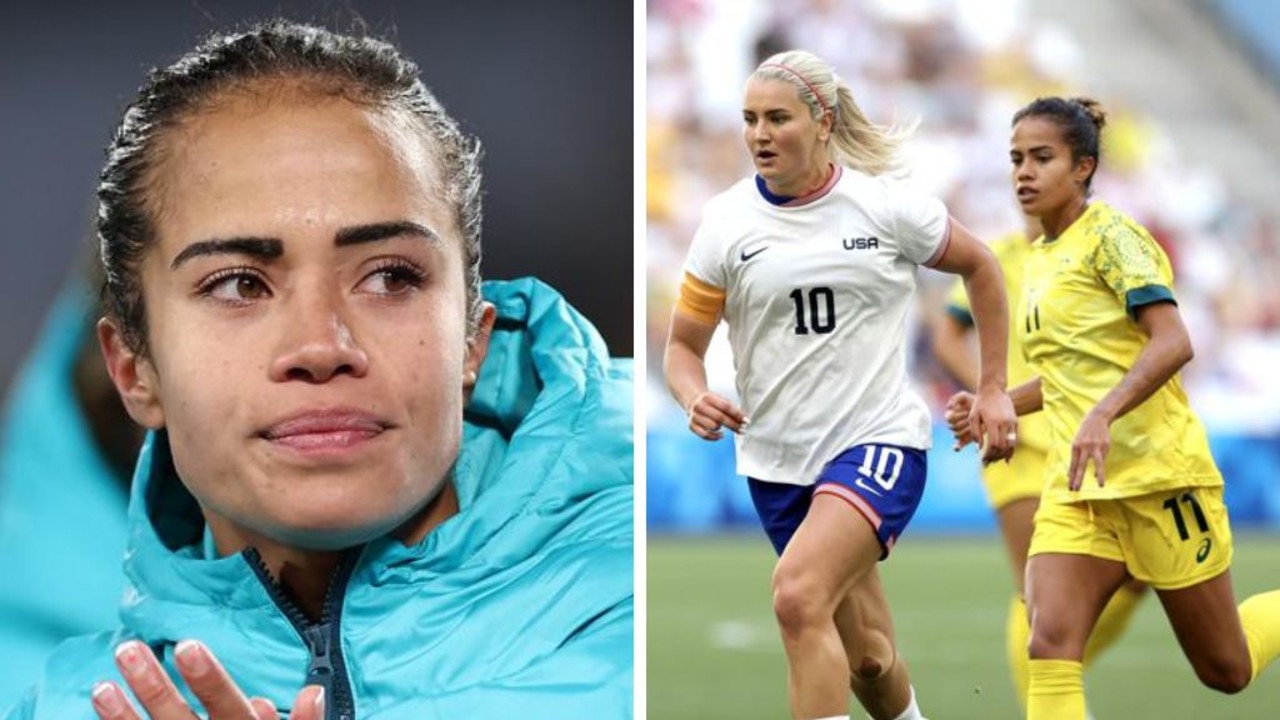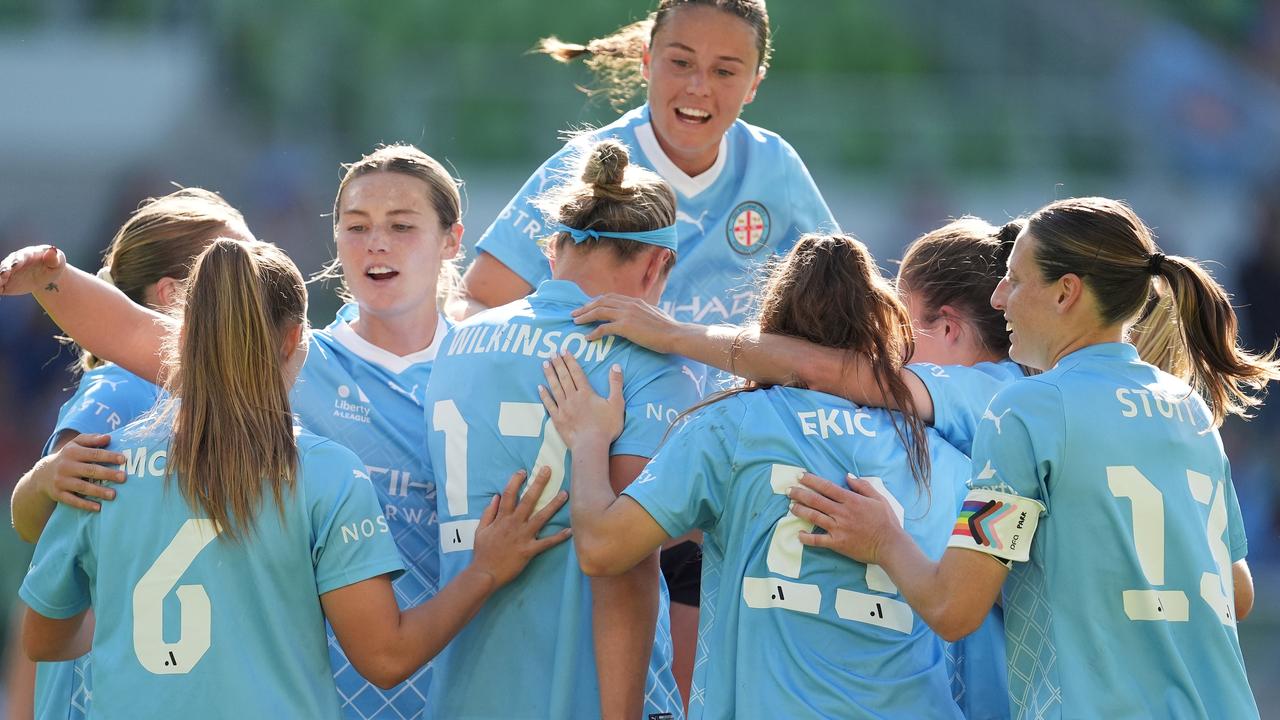Asian Cup 2015: Ange Postecoglou stands on cusp of greatness should Australia beat South Korea
HE’S only won 35% of his games, but Ange Postecoglou stands on the cusp of coaching greatness ahaed of the Asian Cup final. Here’s why.
QUALIFICATION to the Asian Cup final puts 49-year-old Socceroos coach Ange Postecoglou on the cusp of greatness.
His 35 per cent win record and the national side’s slide in FIFA’s world rankings since late 2013 belies that statement.
But this performance is not just remarkable because of the prospect of a major international trophy; it’s the journey that is so impressive.
Those peering curiously form the outside wondered how a national team manager was getting away with World Cup ‘failure’ and shambolic friendly results and performances in the following months. If football fans got a dollar for every time a general sports fan mused ‘when is that Postecoglou going to get the punt’, we’d be pretty well off.
ANALYSIS: ANGE’S REGENERATION, SELECTIONS JUSTIFIED
SOCCEROOS PLAYER RATINGS V UNITED ARAB EMIRATES
ANGE: FANS ARE LOVING WATCHING THIS TEAM PLAY
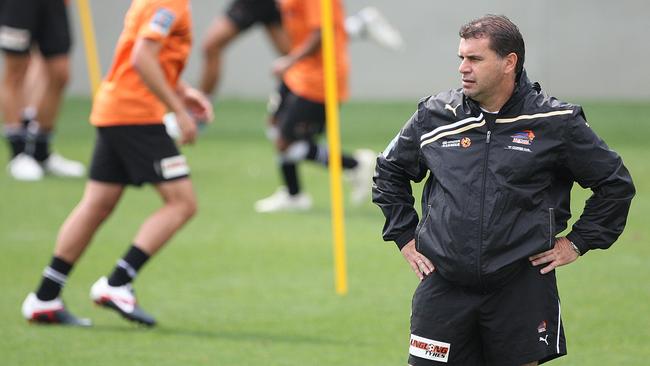
The likes of Rale Rasic, Eddie Thompson and Guus Hiddink are revered in Australian football circles, but a Postecoglou win must put him in the pantheon with football, and Australian sport’s, coaching giants.
Here’s why:
COMPARISON
This isn’t new ground for the Socceroos. Just four years ago, the much maligned Holger Osieck guided the side to the same point at the Asian Cup in Qatar, where they lost the final in extra-time to Japan.
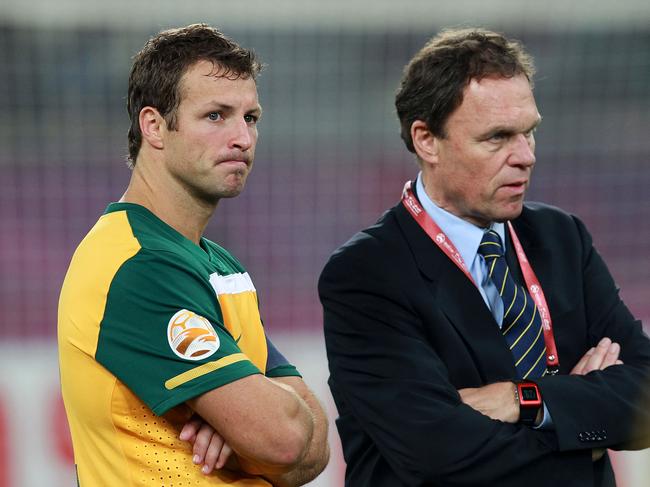
But he did that with the likes of Harry Kewell, Mark Schwarzer, Lucas Neill, Brett Emerton and Brett Holman at his disposal.
Postecoglou, meanwhile, had to sift his way through 43 different players to sort out who was capable of playing at this level, to suit his game plan. While the 2011 crop – and the 2007 golden vintage that failed in the quarter-finals – was filled with football luminaries, the line-up that beat United Arab Emirates featured eight starters who have emerged from the A-League.
Playing on home soil is an advantage, but with that comes the burden of expectation lumped on a very inexperienced side. They’ve harnessed that pressure with aplomb.
REPORT CARD: SPINE OF A TEAM EMERGING
LUONGO TOO GOOD NOT TO BE PICKED
FRANJIC SAYS HE’LL BE FIT FOR FINAL
LEGACY
Pim Verbeek and Osieck both fulfilled their mandates, but in the process, left a vacuum in the national side’s evolution.
In less than 18 months, Postecoglou has stage-managed a painful transition to lead a respectable World Cup against world superpowers, a proper tilt at Asian Cup glory, while transitioning to a new crop of players that suddenly sees a renewed confidence and safety net about the road to Russia 2018, which begins in the middle of this year.
HIS WAY
The stats before the Asian Cup made ominous reading: wins against Costa Rica and Saudi Arabia off-set by eight losses and two draws, Tim Cahill with eight of the side’s 12 goals, all while conceding 22 times, often in frustrating fashion.
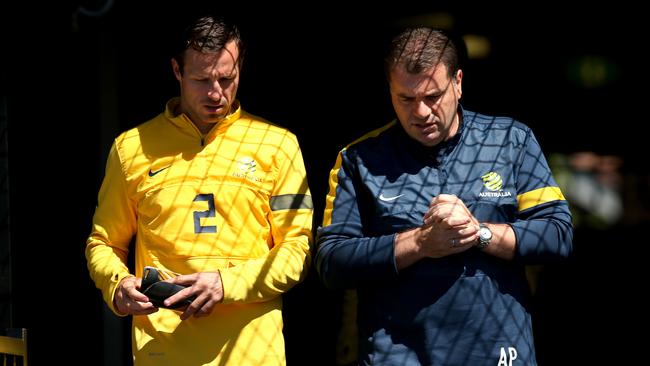
Yet all along Postecoglou exuded calm and a mood of cheeky self-confidence, with a twinkling saying ‘trust me, I’ll prove you wrong’.
He remained stubborn in the face of criticism about the side’s style but all the while knew he was challenging a raw crop with games away from home, without the benefit of a prolonged preparation. We mightn’t even ever face a run of the quality of Croatia-Chile-Netherlands-Spain-Belgium again.
It was tough to fathom losses to Qatar, draws with UAE and close escapes against Saudi Arabia. But he saw who sunk and who swum in the deep end, and the likes of Trent Sainsbury, Ivan Franjic, Matthew Leckie and, more than anyone, Massimo Luongo, have grown into their roles. Watching a player like Jason Davidson shine, despite falling off the West Brom radar in England is another case in point of his man management as well.
TOUGH CALLS
Lucas Neill, Brett Holman, Mark Schwarzer and Luke Wilkshere won’t be lining up to agree, but much like at Brisbane Roar and Melbourne Victory, Postecoglou’s early broomstick meant he was the man in charge. Some of those decisions may have hurt the side in the short-term, but new stars have since emerged.
This cohort buys into his mantra and has the technique and engines to pull it off. Even Tim Cahill was tested early in his regime, and has kicked on with arguably his two finest Socceroos goals.
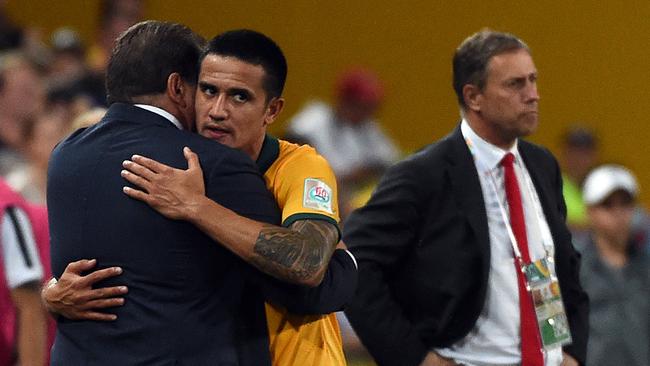
10 different goal scorers have emerged in this campaign, across a tournament high 12 goals and a squad with variety, depth, and match winning talent has emerged.
AUSTRALIA FALLS IN LOVE AGAIN
No one could have anticipated how much traction this Asian Cup would gain – and a lot of it has hinged on the goodwill emanating from the Socceroos.
The likes of Mat Ryan, Robbie Kruse and the new skipper, Mile Jedinak, are joining Tim Cahill as stars of the side.
This team is fearless, plays in the Australian spirit that had dissipated beforehand, but also has the ability, as we saw against UAE, to react to the ebb and flow of the game.
CONCLUSION: ANGE IN THE PANTHEON
He was lauded for his achievements in club football, but to pull it off on both stages makes Postecoglou a modern giant in Australian coaching.
Rasic, Hiddink and Verbeek before him took Australia to World Cups, Osieck steered the country to Brazil, while Terry Venables and Frank Farina’s Socceroos went deep at the 1997 and 2001 Confederations Cups.
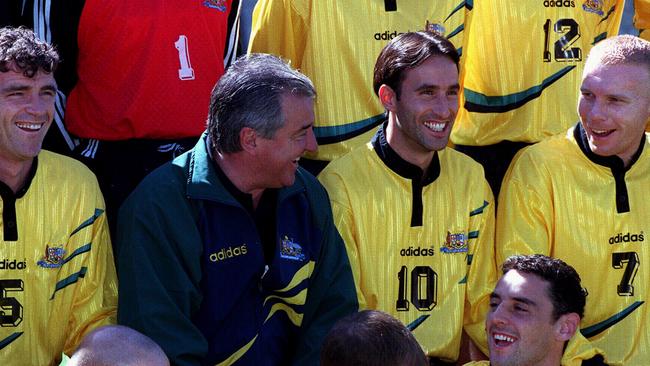
His win percentage is the second worst in history; but Postecoglou doesn’t have the benefit of comical hit-outs against Oceania minnows to balance the ledger or a six-month cameo like Hiddink.
It’s been evolution on the run.
He’s built himself a team that can attack World Cup qualification knowing their status in Asia is renewed.
And silverware on Saturday night, reversing a result against a side Australia lost to on the weekend, should see Postecoglou discussed in the same revered tones as the greats.
Originally published as Asian Cup 2015: Ange Postecoglou stands on cusp of greatness should Australia beat South Korea

